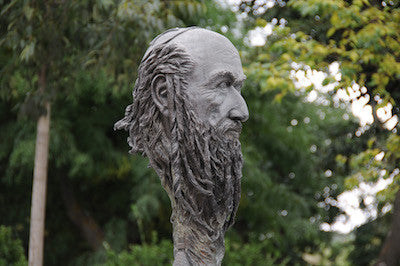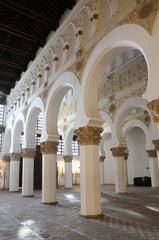Sephardic Jews in Spain

We cant talk about medieval Spain without mentioning the importance of the Sephardic Jews in Spain and their contribution.
There are different arguments as to when the first Jewish people began to settle in Spain. There is some documentation from the early centuries of the Jews coming directly from Israel. As exiles, the Jews were looking for a place that represented safety and where they could call home after the strife they suffered both in Israel and other lands beyond. In all the settlements around Spain, one of the most important was Toledo. It´s original name, Tulaytulah, is said in hebrew to represent those sent from Israel as it means, Wanderer. After the Catholic Monarchs took power, when the expulsion began, there were arguably 200,000 to 250,000 Jews residing in Spain. Jews, either had to flee or had to convert to Catholicism.
 Despite their origins and numbers, there is no doubt that the Sephardic Jews of Spain had left their mark and influence as exhibited in the many cities where they lived and flourished. Beginning with the architecture, Synagogues built as mosques and later converted into churches that are so common. Another interesting element are the portrait´s of some of the more important and influential leaders in the various city. You will find various statues on display for all to see such as the one of Maimonides in Cordoba or Samuel Levy in Toledo.
Despite their origins and numbers, there is no doubt that the Sephardic Jews of Spain had left their mark and influence as exhibited in the many cities where they lived and flourished. Beginning with the architecture, Synagogues built as mosques and later converted into churches that are so common. Another interesting element are the portrait´s of some of the more important and influential leaders in the various city. You will find various statues on display for all to see such as the one of Maimonides in Cordoba or Samuel Levy in Toledo.
Jewish quarters are present in the layout many medieval cities in Spain. However, some cities are more enriched than others with examples of the Jewish traditions. Caceres City is one of those examples. Two things not to miss are the Jewish Call offering spectacular views and also the Caceres museum featuring extensive history on the Sephardic jews living in Spain during that time.

Girona is yet another city endowed with the culture of Jews. Though not visible at a glance, as you focus more and dig deeper into the city, you will appreciate the Hebrew culture. It is helpful to have a local guide to point out the highlights The Jewish Center and Museum which is also the site of Girona's synagogue depict the Jewish lifestyle during the early centuries. You can also study information on some of the more influential Jews in Girona at the museum.
Not only did the Jews create beautiful sites, but also left their legacy in the other Spanish artifacts. The city of Besalu, an important city dating back from the 12th century, is home to the notable Jewish doctors such as Abraham des Castle. Besides this, Besalu houses a Mikveh, a ritual Jewish bath whose temperature can be regulated and it is among the few in Europe. It also holds a medieval Synagogue.
Whichever city you decide to visit for the traditional Sephardic Jewish Traditions, you will not be disappointed by the rich history and inspiring stories of the past. Be sure to research monuments before visiting to ensure they are opened at the time of year you are visiting. Mondays many museums including Sephardic ones typically close. It is also a good idea to consider a local licensed guide that is knowledgeable of Jewish history who can explain in better detail certain locations.
Since we started at Letango Tours, we have put emphasis in our Sephardic legacy and created a team of Jewish expert guides who are now our main asset when it comes to our Spain Jewish Tours.
- Carlos Galvin






Comments 0